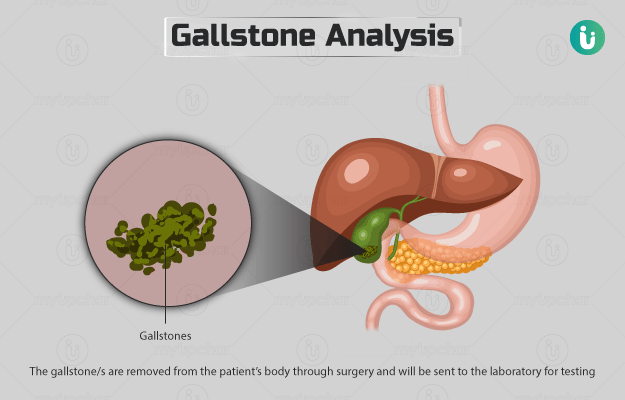What is Gallstone Analysis?
Gallstones are hard mineralised deposits of bile formed in the gallbladder - a tiny, pouch-like organ located below the liver. Bile is a liquid produced by the liver for digestion of fats. It is mostly water but also contains some fats, bile salts and pigments. While it is not being used, bile is stored inside the gallbladder where it becomes more concentrated, making it better at fat digestion. Whenever required, the gallbladder releases bile into the digestive system.
Gallstones form when there is an imbalance in the chemical composition of bile in the gallbladder, i.e. when there is excess cholesterol (a fatty substance), excess bilirubin (a pigment) or less bile salts in the bile. The exact reason for these imbalances is not clear.
Gallstones may also form if the gallbladder does not empty the bile often enough or completely.
Depending on their composition, there are two types of gallstones: cholesterol and pigment stones. The size of gallstones can vary from a tiny grain of salt to the size of a golf ball.
In medical parlance, gallstone formation is known as cholelithiasis. Cholelithiasis is a significant health problem all over the globe, affecting 10-20% of the world population. If left untreated, gallstones can cause complications such as infection and inflammation of the gallbladder (cholecystitis), jaundice and pancreatitis (inflammation of the pancreas).
The following factors increase the risk of gallstones:
- Obesity/overweight
- Excess oestrogen in women due to pregnancy or birth control pills
- Family history of gallstones
- Age over 40 years
- American Indians
- High-calorie, low-fibre diet
- Diabetes
- Metabolic syndrome
- Rapid weight loss
- Certain intestinal disorders, such as Crohn’s disease
Gallstone analysis is performed to detect the chemical components of gallstones using various techniques.
(Read more: Kidney stone analysis)













